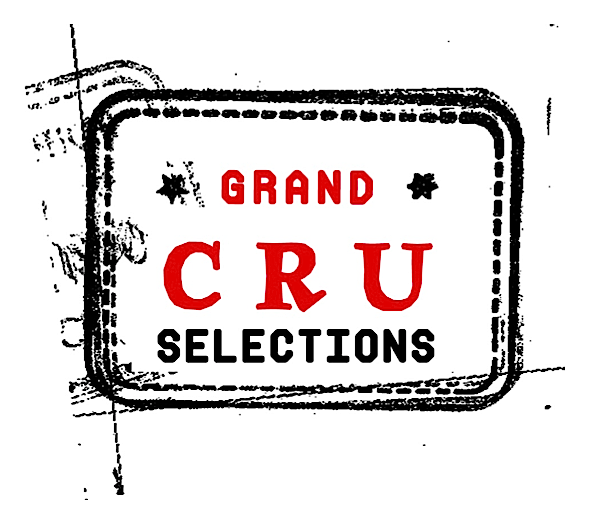CHÂTEAU DE BONNEZEAUX
Bonnezeaux, Anjou, Loire Valley, France
Pierre Boisseaux, Léa Meslet and Florian Zuliani
Chateau de Bonnezeaux's history as a wine estate goes as far back as the early 19th century. (You're probably wondering why you haven't heard of this winery before. Well, for the last three decades they haven't made a single bottle of wine.) In the early 1980s, the winery was shut down and its holdings were rented out. Soon after, the arrangements with local winemakers fell apart and the vines were abandoned.
In 2012 the family decided to resurrect this historic estate with their cousin Guyonne Saclier de la Bâtie at the helm. Part of the group of winemakers in the Anjou Noir shaking things up and strongly influenced by her work with Mark Angeli and Stéphane Bernaudeau, she set out to produce dry chenins from the great terroirs of Bonnezaux. After spending two years replanting the vineyards, 2016 was the first year Guyonne and her family felt comfortable keeping the entire production and, in turn, her inaugural vintage made quite a splash.
Guyonne left the estate in 2019 but the story continues today under the youthful stewardship of Léa Meslet and Pierre Boisseaux, who together exude new energy into this historic property. Observing their ambitious replantation project, a commitment to organic vine management, micro yields, vertical champagne presses and prolonged aging in barrels, we are confident these beloved, and increasingly sought after wines are in good hands with these two. We just wish there was more bottles to be had!
-
Guyonne Saclier de la Bâtie, was fresh off her first internship with Mark Angeli at La Ferme de la Sansonnière where she met and worked with fellow GCS grower, Stéphane Bernaudeau, when she was tapped to lead the resurrection of her family’s estate - Chateau de Bonnezeaux.
Under Mark's guidance and his incredible generosity, Guyonne had all she needed to the get started.
-
La Montagne is the name of one the three south-southwest-facing hills in Bonnezeaux. The other two are Fesles and Beauregard. At the top of the old vineyard in Bonnezeaux there is a lot of clay. Under the old vineyard and the younger vineyards there is a lot of broken schist. The old vineyard has more schist.
-
Currently they have just under four hectares of Chenin Blanc planted with another three hectares of land unplanted. The vineyards had previously been farmed conventionally but since they laid abandoned for 30 years they had returned to a more natural balance. They have been working organically in the vineyard since 2014.
Their approach to farming was inspired by Mark Angeli: Pruning to limit yield is very important; currently yields are approximately 30 hl/ha. All of the Chenin vines are trained using gobelet and are not trellised. The intention behind goblet is that it gives the vines more freedom and air, in turn leading to purer grapes and less rot. Unwired vineyards are very rare in cooler, northern wine growing regions. The vines are tied together at the top to limit how tall they get.
-
No sulfur is added at harvest so not to impede malolactic fermentation later on.
They use a vertical press to press very slowly. One of their three vertical presses was a gift from Stephane Bernaudeau. They plan to keep the overall size of the estate small so they’re not stretched too thin with vineyard work.
Wines
La Montagne
An abandoned parcel neglected for a generation, cleared by hand in 2015. First vintage produced was 2016. This plot is just 5 minutes down the road from the Prevost plot but is classified as Coteaux du Layon. Vines are an average of 40 years olds. Year after year this parcel offers Chenin of freshness and vitality.
Vieille Vigne du Fief Prevost
Produced for the first time in 2017, it is a single vineyard wine coming entirely from their oldest vineyard in Bonnezeaux. Vines are an average of 70 years. 3 hectares in total, only 1 is classified as Bonnezeaux because the rest has too much clay over schist. Total production was four 400-liter barrels.
Frimas
100% Chenin Blanc. Due to the great crop loss in 2019, they bought grapes from a close neighboring parcel with the same geographic situation as Bonnezeaux, clay soils and schist. 2019 was first vintage. The 2020 release of Frimas is a multi vintage wine (75% ‘20 & 25% ‘21). The majority is composed from estate parcels with 25% grapes purchased from their organic neighbors. At harvest, they did a soft (basket) press and then encouraged a native ferment as they used to do for the other cuvées : Fermentation in cuves for around 3 weeks and aging for at least 12 months. Then bottling in November with a light filtration, 2g SO2/hl for bottling. All the barrels are at least 5 years old.
La Minée Haute
First vintage of this cuvée from a new parcel (2020) from mixed schist and gravel parcel at the foot of a small peaceful and wild valley. Aging 12 months in barrels as with the other cuvées.
Coquerie
Another new parcel that made it’s debut with the 2020 vintage. This site has been a real revelation with it’s outcropping schist and quartz. One finds the freshness of Chenin, straightness from the rocky soil and the aromatic complexity from grapes picked very ripe by selective sorting on exceptional soil. Aging 12 months in barrels as with the other cuvées.

